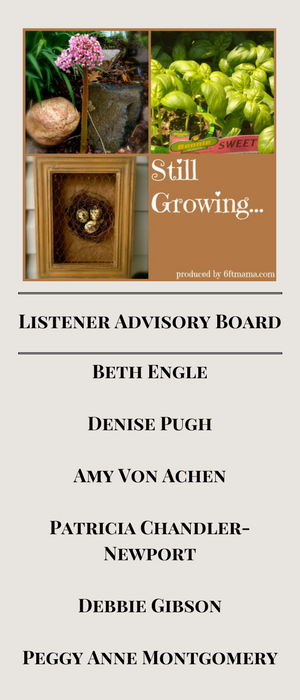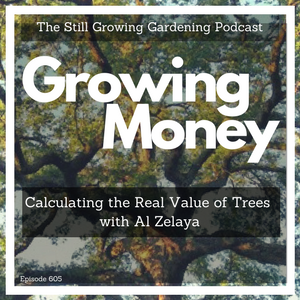On a micro level, homeowners can often be unsure of how to value the trees on their property. But, Al’s team understands the various values people should consider. When it comes to investing in trees, homeowners can realize increased property values, reduced energy costs, even a decrease in the amount of time a home may be on the market.
I said at the top of the show, there’s that old saying that, "money doesn’t grow on trees".
But, Al would beg to differ.
There is a monetary value to the services trees provide.
Here are just a few of the benefits that Al and his team, as well as many other researchers, are working to ascribe monetary value to:
First, trees reduce energy demand. For instance, homes use less AC when they have the benefit of a large tree canopy providing shade. Furthermore, that energy reduction means that power generators don’t have to make as much power for communities. It's a win win.
Another important benefit provided by trees is that they are an important part of a climate adaptation strategy in the face of global warming. During photosynthesis trees use carbon dioxide, one of the culprits of global warming. In fact, half of the weight of trees is carbon - they are massive carbon sinks or masters of sequestering carbon (as Al likes to say).
We know trees also reduce stress and there are a number of researchers working on trying to quantify this benefit.
Trees also reduce pollutant concentration and improve public health. Have you ever thought of trees in terms of public health? You should. In fact, it’s one of the areas where Al and his team have been making great strides. We know that trees intercept air pollution - so they improve air quality. Specifically, trees help absorb gaseous pollutants like ozone, nitrogen dioxide, and sulfur dioxide. Plus, they intercept particulate matter (very fine dust particles that are in the air). Particulate matter can have very detrimental health impacts. So by reducing asthma incidents or respiratory ailments, people are able to work and kids are able to go to school. Al’s team can actually attach a monetary value to trees in that regard, thereby making the case for trees as a vital investment for overall public health. Just this one benefit is such a powerful example of the importance of this work - the importance of calculating a value for our trees.
Al’s work continues the legacy in urban forestry started by Dr. Dave Nowak of US Forest Service and Dr. Greg McPherson of the US Forest Service. In a recent article, David Nowak whittled down 30 years of studying the economic value of forests to this singular piece of advice: If you can only plant one tree, plant it in a city. As for Dr. McPhereson, he grew up under a canopy of American elm trees in Howell, Michigan. Despite attempts to save them, all the trees succumbed to Dutch elm disease. Having felt the sting of that loss, he became a green accountant - developing new methods and tools for quantifying the value of nature's benefits from city trees. As Al points out, the pioneering work of Nowak, McPherson and others, is making it possible to translate much of this research into algorithms that can quantify the value of trees. The array of online and smart phone tools help all kinds of people - from middle schoolers all the way up to watersheds.
i-Tree Design. This is a tool that allows you to
enter your actual address or general city (for anyone in the US and Canada). You can trace the outline of your home and
actually place trees on your property. This tool will
grow the trees and project benefits of the trees. In addition to students, landscape architects have discovered this tool and now they are using it for their work. The design tool gives you very interesting information - especially in how important
tree placement can be in terms of value. And, the design tool can even be used for large tree planing projects.
i-Tree Design is a helpful new way of looking at the benefits of trees. For instance, it can tell you
how much storm water the tree is capturing or
how much carbon the tree is sequestering.
i-Tree Design shows
the monetary value of a tree over time. When you’re done creating your plan,
you can even print out the report. The report feature is fantastic for grant applications. For example, if you’re applying for a grant for a park, you can add this report
to strengthen your grant application. My personal favorite aspect of this tool is that it will give you a visualization of
tree canopy growth; something I appreciated when I realized my
locust tree is pretty much at it’s mature size. Here I'd been holding back on adding trees, when I should have been planting more.
i-Tree Design will show you that placement decisions matter - so vet where you plant your tree to
maximize benefits. If you’re interested in energy savings, this tool will show summer savings and winter savings offered by the tree. Some placement is better than others. In this tool, you can move your tree around on the property and you can see the dollar value of the energy savings change - going up and down based on where you place the tree on the property. There’s an energy savings in summer (shade) but also in the winter (wind block). And, the species matters too. For instance, a conifer is a better wind block than a maple. Without a doubt, species, size and placement can play into the decision making around placement around a home.
i-Tree MyTree is the online tool that works great on small devices like smart phones and tablets.
i-Tree MyTree allows you to e
asily assess the value of one to several trees in a mobile web browser. It’s got more dropdown feel and user experience..
i-Tree Species is interesting because you
reverse engineer the species of the tree you should plant by selecting the environmental services you want the tree to provide. Super cool. Just enter your location and height information (to address constraints with overhead wire, etc.) With
i-Tree Species, you can look at tree species not just based on color in the fall - but now also based on important functions like temperature reduction, allergenicity, air pollution removal, carbon storage, wind reduction, air temperature reduction (a nice climate effect during the summer), etc. Then, based on all of those criteria, it gives you a list of tree options that fit your criteria. It’s a nice tool to supplement your tree selection decisions.
Here are a few important points to keep in mind for today’s episode:
Al correctly points out, that we tend celebrate tree planting but we should equally celebrate tree care and maintenance because that’s how the real value of the tree is realized. It takes a long time for a tree to get to maturity. We must focus on tree preservation- care and maintenance - so that trees can be a sustainable resource.
We should strategically place trees in relation to our homes to maximize their benefit. I asked Al to consider the four quadrants around a home - North South East West - and then asked, "Where does the most benefit come from?" Al says that the first priority should be planting trees to the West and North of the home because they give the benefit of summer shade and winter wind block. Planting east of the house cuts down impacts of morning sun and strong midday sun. The most negative impact is placement to the south of the house because it has a negative winter impact. Why? Because the sun moves a bit more south in the winter. So, a tree to the south of the house can actually block the sun and that equates to a negative impact in the winter.
Finally, Al shares how to maintain great trees.
- First, become informed about your trees. Know the species of trees on your property. Understand the characteristics of your trees.
- Second, assess the health of your trees. Consult an arborist or your local county extension office. Learn about the state of your trees. Are they healthy? What care do they need?
- Third, balance your tree portfolio the same way you balance your financial investments - by diversifying. Protect your tree investment by planting greater tree diversity on your property. On today’s episode, Al will share a number of his favorite species. So take note of his recommendations - including the Kentucky Coffee Tree and a number of oak trees.
The main takeaway here: If you want to enjoy the full benefits of trees, you have to sustain them. As Al points out at the end of the episode, trees really do pay us back many times over. Today, we have many online tools to choose from that can help us see the monetary value of trees.
We’re talking trees today - how to measure their value and services as well as some pretty incredible free online tools anyone can use - Here’s Growing Money: Calculating The Real Value of Trees with Al Zelaya.
- - - - - - -
I hope today’s show gives you an extra appreciation of the benefits and services provided by trees - from carbon storage and intercepting storm water, to capturing pollution, increasing home values, reducing energy costs, and of course their beauty.
For my sign-off today, I leave you with this thought to help you grow...
What is the monetary value of the trees on your property? Use the free resources available at
i-Tree Online Tools. You will have a more profound appreciation for your trees and I’m hoping it sparks a commitment to tree care. As Al said, they pay us back with a number of valuable dividends many times over.
Have a great week everyone!









